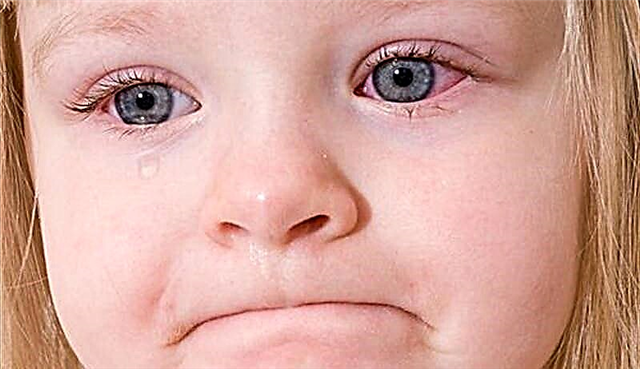
A fermented milk product like yogurt is a favorite for many adults and children. It is obtained in the process of fermenting milk by special bacteria - Bulgarian sticks and thermophilic streptococci. This distinguishes it from other fermented milk products and provides its beneficial effect.
At what age is it worth introducing the toddler to this simultaneously tasty and positive health product, what is its usefulness for babies and does yogurt have a harmful effect on the child's body? Can children shop yogurt and how to choose it? Is it possible to cook at home? Let's find out together the answers to these and other questions about yogurt in baby nutrition.

Benefit
- Yogurt contains proteins that are well absorbed in the child's body.
- Yogurt is an excellent source of calcium, which is important in building bones and strengthening teeth.
- Also, yoghurts contain a lot of vitamins and minerals that are important for the growth of a child.
- With yoghurts, probiotics enter the body of babies, which have a positive effect on digestion and immunity. Thanks to the beneficial bacterial flora, such products are especially recommended after a course of antibiotics.
- Baby yoghurt can be liquid (drinking) or thicker (using pectin), making the yoghurt complementary foods quite varied.
Harm and contraindications
Yoghurts for baby food have a short shelf life, so there is always a risk of giving the child poor-quality or expired food if the mother forgets to check the terms on the packaging or stores the product incorrectly. In addition, due to the wide variety of fermented milk products on store shelves, it is easy to make a mistake and offer a crumb a product that is not recommended for children. Only the attentiveness of the parents can prevent such mistakes.
Could there be an allergy?
The baby may react to yogurt with allergies in cases where the baby is offered a product with fruits or berries. Allergic reactions to yogurt without additives are very rare if the child has an intolerance to milk proteins.

From how many months can you introduce complementary foods?
For artificially fed babies, yogurt can be given from 8 months of age, and for babies receiving breast milk, the introduction of such a product into the diet is recommended by doctors at 9 months.
Diet Tips
For the first sample of yogurt, you should choose morning feeding in order to monitor the child's condition until the end of the day and immediately find out if the baby has tolerated the new product normally. Further, yogurt is most often given in the fourth feeding (afternoon snack), combined with fruits, cottage cheese and cookies.
"Live" yoghurts, on which there is no mark "for children", it is permissible to give babies no earlier than two years. The amount of yogurt recommended for use in early childhood should be up to 50% of the daily recommendations for the amount of fermented milk complementary foods. For a child under one year old, 100 ml of the product is enough, and for a 1-3-year-old baby - up to 200 ml.
How to cook at home?
Making yogurt at home is easy enough, but you need to purchase a special sourdough starter. You will also need milk for yogurt, which should be boiled. It is important to use sterile dishes for making yoghurts.

In a yogurt maker
For boiled milk, into which the sourdough is introduced, the temperature should be about + 40 °. If it is higher, bacteria will not be able to multiply and yogurt will not work. The main advantage of the yogurt maker is the long-term maintenance of the temperature required for the "work" of the starter microorganisms.
Most often, yogurt is prepared in such a device in 8-10 hours, so it is quite possible to put milk with sourdough in the yogurt maker in the evening, and in the morning to put the finished product in the refrigerator. Such yogurt should be given to a child within 4-5 days after preparation, and best of all - in the first two days (the benefit will be maximum).

In a multicooker
Cooking yoghurt is possible in this appliance if there is a suitable setting. For one serving, usually use 2 liters of milk with a fat content of up to 3.2%. It should be brought to a boil and then cooled to about 42 ° C. After adding a suitable starter culture to the milk and mixing, the mixture is poured into a multicooker, covered with a lid and set to the "yogurt" mode. The product will be ready in ten hours when it should be poured into glass containers and refrigerated for at least 3 hours.

In a thermos
Boil the milk and cool to about + 40 + 45 ° С, add the leaven to it and mix well, then immediately pour into a thermos, which should be treated with boiling water (this will prevent the development of bacteria other than milk bacteria in the milk). Wrap the thermos in a warm cloth and put it in a warm place, for example, near a radiator during the heating season or in a sunny place in the summer.
After keeping the thermos warm for 4 to 7 hours, pour the yogurt into jars and keep in the refrigerator for at least 2 hours. The cold will stop the growth of bacteria and will prevent the milk from souring further. The finished product can be mixed with fruits, jam, syrup and other ingredients.

Recipes for babies up to a year
After the baby gets acquainted with yogurt without additives, it will be great if the baby likes such a product without additional components. However, many children are more willing to eat yoghurts, which have added fruit and other delicious ingredients.
Home-made yogurt or purchased baby product goes well with:
- Applesauce.
- Peach puree.
- Banana.
- Pumpkin.
- Pear.
- Curd.
- Baby cookies.
Remember that when mixing yogurt with fresh fruit, the product must be eaten immediately. But you can add ready-made canned puree to yogurt in advance.

Fruit salad with yogurt
Using yogurt as a dressing for baby fruit salad is a great idea. Such salads are recommended to be given to crumbs older than one year. Since it is most beneficial to consume seasonal fruits, such salads can be divided into summer and winter. Let's consider examples of their recipes.
Add fruits to your liking and remove those that are not at hand. Fruit salad is always delicious!


For summer yogurt fruit salad, take:
- 1 apple;
- 1 pear;
- 3 plums;
- a slice of melon;
- 10 grapes.
After slicing the washed peeled fruit, add the yogurt to it and stir. Sweeten with a little honey if desired.
Winter salad
For a winter fruit salad with yogurt you will need:
- 1 apple;
- 1 kiwi;
- 1 persimmon;
- 1 banana;
- 1 mandarin.
Peel the fruit, remove the seeds, then cut into cubes and lay out in layers, each of which sprinkle with yogurt and sprinkle (although this is not necessary) with a little sugar.
Serve these salads on the child's table immediately after cooking so that the fruit does not lose its valuable properties. To increase appetite, you can beautifully arrange them, for example, in the form of an animal or a car.
Watch Recipeshare's video of yogurt and fruit salad.
How to choose a starter culture?
You should not prepare yogurt for your child by fermenting milk with ready-made store-bought yogurt, since fillers and microflora of the product will give you unpredictable results. The best choice is to purchase a starter culture that contains the bacteria you need to make yogurt.
You should buy the starter culture at a store or pharmacy, making sure that it is stored in the refrigerator. Be sure to check that the expiration dates on the starter package are not exceeded. For the preparation of yoghurts that you will give to babies (especially if the product is intended for children under one year old), it is advised to use a new portion of the starter every time.
To diversify the fermented milk complementary foods, try making not only yogurt at home, but also using other starter cultures, for example, bifivit, vitalact or streptozan.

How to choose yogurt in a store?
- The word "yogurt" must be present on the product.
- Always read the product label for any thickeners, sugars, flavors, or colors. There should not be such components in baby yogurt. The best product for a child is the one with only milk and leaven.
- Fruit supplements are acceptable, however such yoghurts should be given very carefully due to the risk of allergies. If you want to treat your little one to fruit yoghurt, it is preferable to combine plain yoghurt and fruit puree.
- Buy yoghurts up to 3.2% fat for small children. Higher fat creamy yoghurts are only recommended for children over 2 years of age. A low-fat product is considered unsuitable for children unless advised by a healthcare practitioner.
- When buying, be sure to look at the terms and conditions of storage. Children should buy yogurt that has been stored for up to five (maximum seven) days. Also discard a product that can be stored without a refrigerator.
- Yoghurts of such well-known brands of fermented milk products as Miracle, Actimel, Activia, Imunele, Ehrmann, Rastishka and the like are not recommended for babies under 3 years old.
- If yoghurt is marketed as a bio product, the microorganism concentration data should be on the label. Usually, by the end of the shelf life, their content should be at least 107 CFU.
For information on how to choose yoghurt, see the OTV channel.
Find out if your child's weight is normal using the following calculator.



